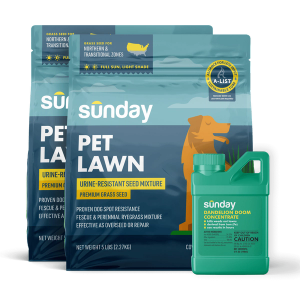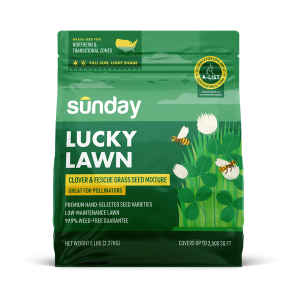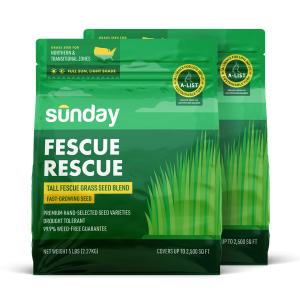Why aerate a lawn?
In general, we do not feel core aeration should be a routine practice in a Sunday lawn program. The goal is to not disturb your lawn’s soil as much as possible.
However, aeration can be essential for high-traffic lawn areas with soil prone to compaction (like clay and silt). Compacted soil impacts the ability of oxygen, water, and nutrients to penetrate into the root zone, which can reduce root growth, leading to weaker grass.
Benefits of aeration can include:
- Improves the uptake of Sunday nutrients
- Allows soil to absorb the water it needs and reduces drainage issues like runoff and puddling
- Helps to reduce the amount you need to water in general
- Reduces soil compaction which leads to poor grass health
- Strengthens lawn’s ability to endure heat waves and drought
Issues with aeration can include:
- Unnecessarily disturbs healthy soil
- Poor timing of aeration can bring up undesirable weed seeds
- Typically only affects less than 10 percent of lawn surface
- Needs to be performed routinely—meaning soil will settle back to the same bulk density (~8-10 weeks), especially in high-traffic areas
How to tell if your lawn needs aeration
If you have a clay loam or clay heavy soil, you should evaluate the need to aerate each season. If you have softer soils (like loam or sand), it's a good idea to check, but if your soil and grass are healthy, you likely don't need to aerate.
DIY aeration test
A great way to test if your lawn needs core aeration is with a screwdriver. Yep, a screwdriver!
- Select a screwdriver. Flathead or Phillips, it doesn’t matter.
- Take the screwdriver and insert the head into moist soil.
- If you can't easily insert it into the soil, your lawn likely needs aerating.
Sunday Tip:
You can determine your soil texture (clay, loamy, sandy) in your Sunday lawn account, or you can DIY texture your soil at home.
When to aerate a lawn
The best time to aerate cool-season lawns is mid to late spring, or in the fall. For warm-season lawns, it's best to wait till late spring or early summer.
Sunday Tip:
If you’re aerating in the fall, be sure to faithfully remove as much lawn thatch as possible by raking deep rather than just skimming the autumn leaves off the top of the lawn.
How to aerate a lawn
Know what type of aeration you need
Hint: It's core aeration. Core aeration is when those little tube plugs are removed from the lawn. Some aeration practices just force a hole in the lawn without any removal; this jamming makes soil compaction worse.
Rent equipment or hire a professional
There’s likely no need to own aeration machinery because you won’t aerate your lawn all that frequently. Rent the equipment from a local hardware store, or hire a local landscaper.
Rake away or allow the aerated soil plugs to break down in the soil
For compacted soils, raking up the plugs will go a long way. Otherwise, these plugs will break down back into the soil. If your soil is not compacted, plug removal is not necessary.
Sunday Tip:
Skip aeration if your lawn was seeded or sodded within the last calendar year.
After aeration, consider if you really need aeration at all (or just sometimes). Some yards don’t need aeration or don't need it very often and can be aerated once every two or three years. High-traffic areas with compact-prone soils can benefit from yearly care.
Bottom line: Knowing if and when to aerate your lawn really depends on the health of the grass and your lawn’s soil.
Ready for custom care?
Our lawn engine uses satellite data to map out your lawn size and determine things like average rainfall, common weeds, and pest activity.
Cited sources
Aeration of Turfgrass Areas. Penn State University Extension.
Fall maintenance tips for a healthier spring lawn. UMN Extension
Lawn Aeration and Topdressing. University of Wisconsin-Madison Extension.
Lawn Care: The Easiest Steps to an Attractive Environmental Asset. Cornell University Extension.
Soil Compaction. Cornell University Extension.


















